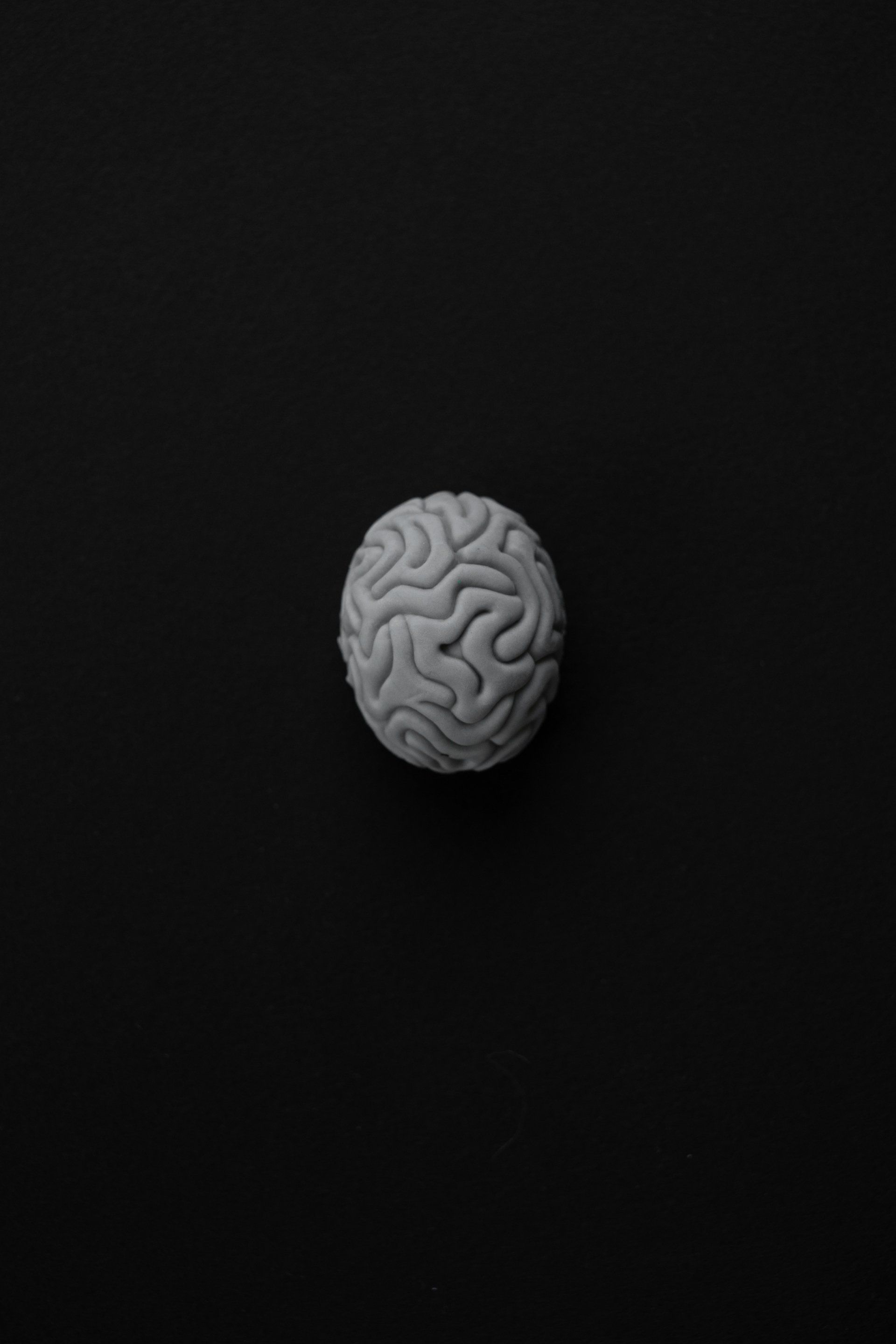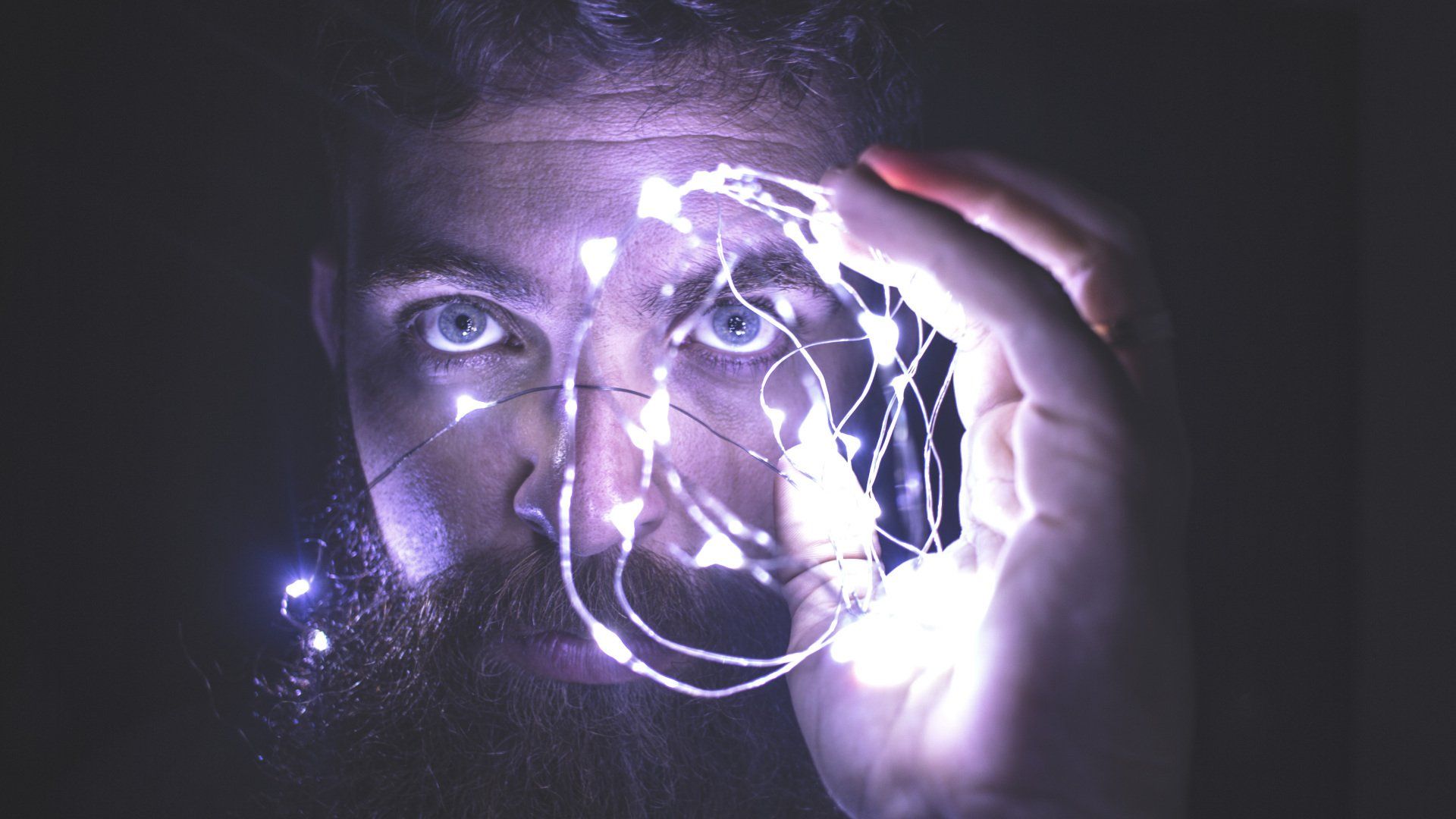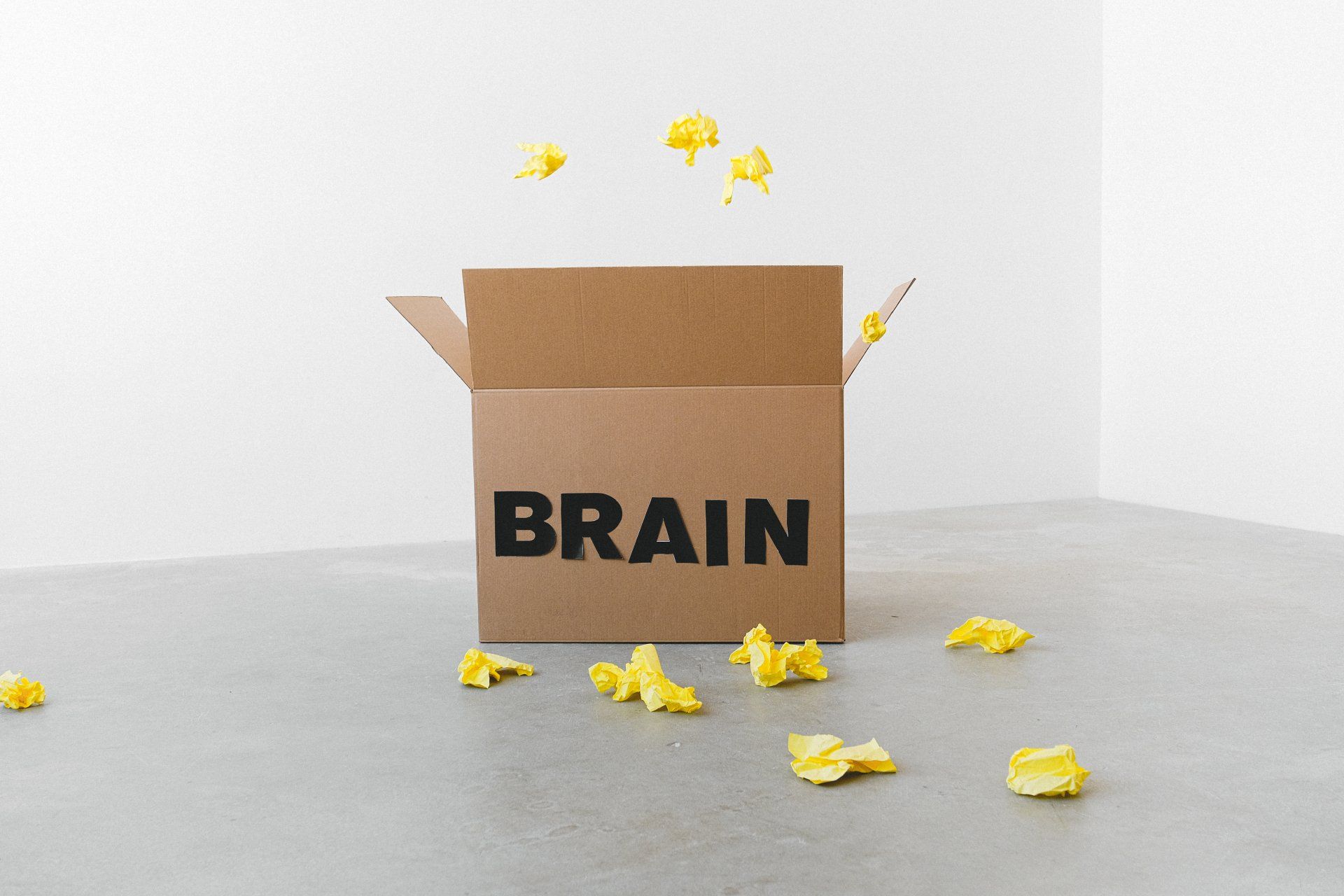What is Brainspotting?
Brainspotting (BSP) is a powerful, neuroexperiential-focused treatment method that easily integrates into other therapies. At its core, BSP draws upon both the neurobiological attunement and the therapist’s deep relational attunement to the client. The two attunements work together to create a powerful framework that enhances healing and expansion.
Past traumatic experiences can overwhelm one’s nervous system. BSP allows us to gain direct access to the subcortical brain (where deep memories and emotions lie). The eye position acts as a doorway. By processing at those direct entryways (Brain spots), we can relieve and heal sources of pain/trauma. This process involves the body’s central nervous system, which plays a crucial role in processing trauma and emotional stress. By interacting with the midbrain, BSP helps regulate the body’s responses to trauma, leading to healing and performance enhancement. Brainspotting works by helping individuals access and process traumatic experiences that have become trapped in their bodies and minds, facilitating healing trauma. Brainspotting enables therapists to access emotions more deeply by helping clients position their gaze to target sources of negative feelings. BSP was developed by David Grand, Ph.D. in 2003.
Brainspotting is a nervous system regulating process. It is popular among mental health professionals for its effectiveness in treating various mental health issues, particularly trauma-related symptoms.
What is a Brainspot?
A Brainspot is a relevant eye position. This can be chosen by either the client or the psychotherapist. Often, the individual will find a Brainspot by noticing an increase of emotions or body sensations in a particular visual location. The therapist may also find Brainspots by observing reflexive responses in the client. A BSP therapist plays a crucial role in identifying these Brainspots, guiding clients through the therapeutic process to locate key areas within their visual field.
Eye positions are essential in the therapeutic process as they help in diagnosing and treating emotional pain and trauma.
A Brainspot gives access to the emotionally charged issue in the brain. It’s a bottom-up approach, rather than trying to solve a problem from the top down by trying to use the (neocortical) conscious “thinking” brain. While the client is processing on the spot for a prolonged period of time, we find that the experience moves in a direction of discharge, healing, and change. Brainspotting makes use of biolateral stimulation. This involves listening to soothing background music and/or nature sounds that move from ear to ear. Biolateral stimulation is known to increase effectiveness.
In short, “Where you look affects how you feel.” The client's visual field is utilized in Brainspotting therapy to facilitate healing by focusing on reflexive signals indicative of emotional intensity.
How does Brainspotting Help?
BSP is a way to work on trauma or painful emotions in a secure environment, specifically targeting emotional trauma or somatic experiences in the body. It can also help in decreasing physical and emotional symptoms associated with distressing traumatic events, leading to improved overall mental health. Brainspotting helps process and release painful memories, allowing individuals to address and move past these challenging experiences. It can also help in decreasing physical and emotional symptoms associated with distressing traumatic events, leading to improved overall mental health. Brainspotting helps individuals access and process negative emotions, which are often tied to these traumatic experiences. It can also be used to find and strengthen resources and resiliency and to enhance positive feelings and performance. A lot of times, we can get stuck in emotional responses and maladaptive patterns of behavior that often seem impossible to change or resolve. Through Brainspotting, individuals tend to escape these stuck patterns. They find relief from painful emotional experiences and repetitive feelings.
Brainspotting plays a significant role in facilitating the overall healing process, helping individuals recover from trauma and various disorders.
What happens in a Brainspotting session?
Since there are 1-4 quadrillion neurons in the brain, the possibilities of what your session may look like are infinite and highly attuned to your individual needs. Seeking therapy is the initial step where individuals reach out for help, and understanding your motivations is crucial for developing an effective treatment plan. Brainspotting targets physical symptoms associated with stress, tension, and pain, helping to identify and process unresolved traumas or neuroplastic pain. Brainspotting therapy is designed to facilitate rapid and effective change, often yielding faster results than traditional therapies. Feel free to ask your therapist how this could look and be integrated into your current treatment or what it may look like to get started. BSP sessions are recommended at 90 minutes but can be effective in shorter sessions as well (depending on the amount of time needed for processing and recovery). Many people who are ready for change don’t want to wait months to get in-depth healing or reach goal achievement. To accommodate people who are ready to deep dive and carve out space in their lives for healing. We also offer intensives. These last anywhere from 3 hours to a full weekend. People accomplish what they normally would in 6 months on a weekend. We encourage you to talk with your therapist to see what the best time would be for you. BSP therapy starts with a general assessment and education then moves into processing. The sessions often end with grounding exercises. It is important to find a therapist with specialized training to ensure effective and safe treatment.
Core principles of brainspotting sessions
Brainspotting sessions are guided by several core principles that ensure a secure and effective therapeutic experience. These principles include:
- Client-centered approach: In Brainspotting sessions, the client’s needs and responses take center stage. The therapist tailors the session to the client’s unique experiences, rather than following a predetermined agenda. This personalized approach helps create a more meaningful and effective therapeutic process.
- Mindful presence: A key aspect of Brainspotting therapy is the therapist’s mindful and non-judgmental presence. By maintaining a calm and supportive environment, the therapist allows the client to explore and process their emotions and experiences without fear of judgment or pressure. While also teaching the client how to process without judgment or criticism.
- Dual-attunement: During Brainspotting sessions, the therapist attunes to both the client’s verbal and non-verbal cues (somatic cues), as well as their own internal experience. This dual attunement fosters a deep sense of resonance and connection, enhancing the therapeutic relationship and facilitating healing. We find that the dual-attunement present helps people to drop deeper into the sub-cortex for more powerful healing experiences.
- Somatic tracking: Brainspotting therapy emphasizes the importance of somatic tracking. The therapist helps the client become more aware of their physical sensations and bodily responses, which can provide valuable insights into their emotional and psychological state. This awareness is crucial for processing and releasing trauma. Somatic experiencing is often integrated into Brainspotting to address the brain-body connection and facilitate trauma processing.
- Processing and release: The ultimate goal of Brainspotting sessions is to guide the client through a process of identifying, processing, and integrating traumatic memories, somatic pain, and emotions. Brainspotting helps clients process trauma by accessing and releasing trauma stored in the brain without needing to relieve the traumatic experiences. This process promotes a sense of resolution, helping clients move forward with a greater sense of peace and well-being and noticing differences in their physical sensations, thoughts, and behaviors.
Brainspotting also helps individuals process deep emotions associated with their traumatic experiences, ultimately facilitating recovery and emotional release.
Preparing for Brainspotting
Preparing for a Brainspotting session involves several steps that can help you get the most out of your therapy experience. Here are some tips to consider:
- Identify your goals: Reflect on what you hope to achieve through Brainspotting therapy. Whether you’re looking to reduce symptoms of post-traumatic stress disorder (PTSD), reduce chronic pain, heal attachment wounds, manage emotional stress, or improve your overall mental health, having clear goals can help guide your sessions and measure your progress. Additionally, Brainspotting therapy offers other benefits such as cost-effectiveness and flexibility, making it a versatile option for various treatment plans.
- Create a safe space: Find a quiet and comfortable space where you can relax and focus during your Brainspotting session. This environment will help you feel more at ease and open to the therapeutic process. Brainspotting is effective in addressing various mental health concerns, including trauma, PTSD, depression, and anxiety, which can arise when trauma is left untreated.
- Be open-minded: Brainspotting therapy may involve techniques and approaches that are new to you. It looks very different than your typical talk therapy session. You don’t have to talk about everything to heal. We invite you to be open to try new things and explore different ways of processing your emotions and experiences.
- Practice self-care: Taking care of yourself before, during, and after your Brainspotting session is crucial. Engage in activities that promote relaxation and stress reduction, such as deep breathing exercises, drinking water, being outdoors, or gentle physical activity. Self-care can help you feel more grounded and supported throughout your therapy journey. You will work with your therapist to identify what activities will be best to facilitate your healing journey.
What Brainspotting Helps With
Anxiety Reduction
Trauma Treatment
Chronic Pain Treatment
Sports Performance
Injury Recovery
Emotional/Behavioral Blocks
Meet
Our Brainspotting Therapists
A BSP therapist plays a crucial role in a brainspotting session. They guide clients through the therapeutic process by establishing rapport, facilitating relaxation, and helping clients identify and process distressing emotions and memories. This guidance helps clients focus on specific 'brain spots' to promote healing.

Bio-lateral Music
Biolateral music is a powerful tool we often use in Brainspotting.
Bi-lateral and Bio-lateral music can be easily confused, but they are quite different.
Bi-lateral music is often used in Eye Movement Desensitization Reprocessing (EMDR) therapy. With bi-lateral music, sound alternates between the left and right sides using a steady rhythmic pattern. This pattern is predictable and the brain can start to become used to it. Some clients find it jarring.
Bio-lateral music was created by the developer of Brainspotting therapy, Dr. David Grand. This music is specifically designed for BSP. The music gently pans between the left and right hemispheres of the brain. It is intended to be played through headphones at very low, almost inaudible, volume. Most clients find this music calming. Bio-lateral music allows for deeper processing as it helps clients access the midbrain.
Bio-lateral music can be found online through popular music platforms, such as: Youtube, Spotify, Apple Music. It is strongly recommended that you try the music first in the presence of an attuned therapist. You and your therapist work together to determine how your particular brain will respond to the stimulation. If you and your therapist believe the music fits your process, you may use it throughout your week or you may only use this during sessions.







